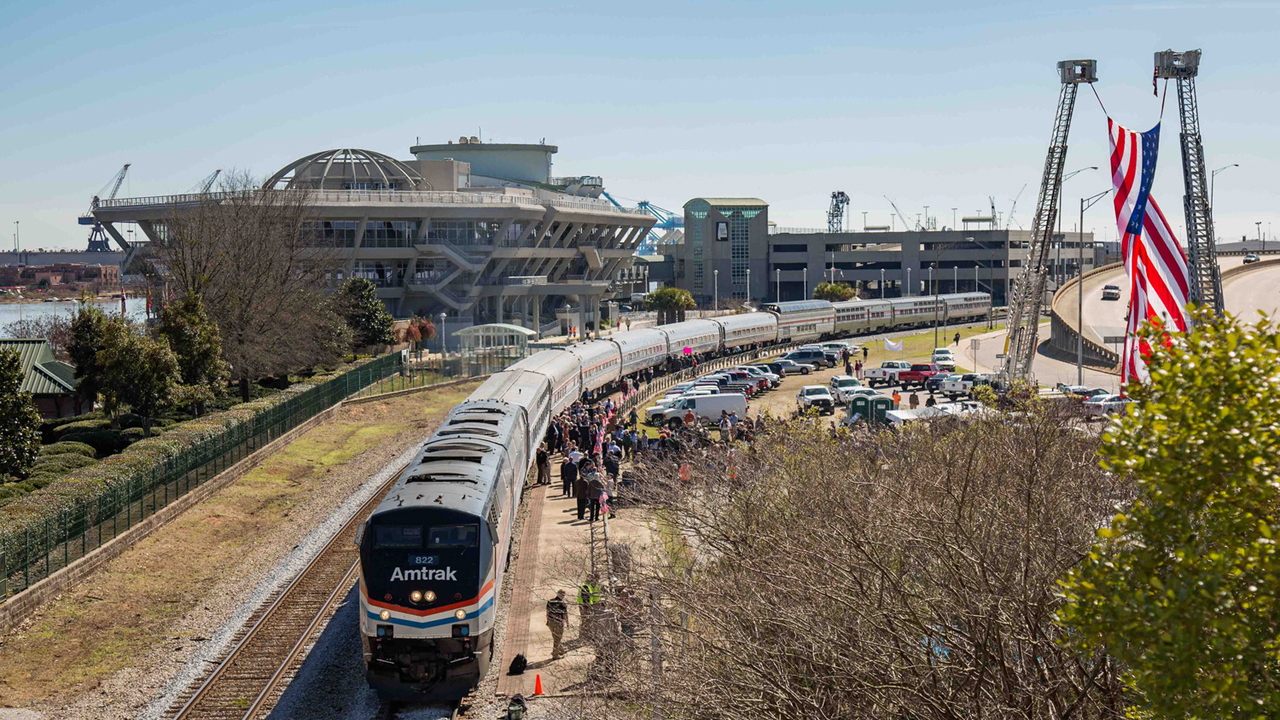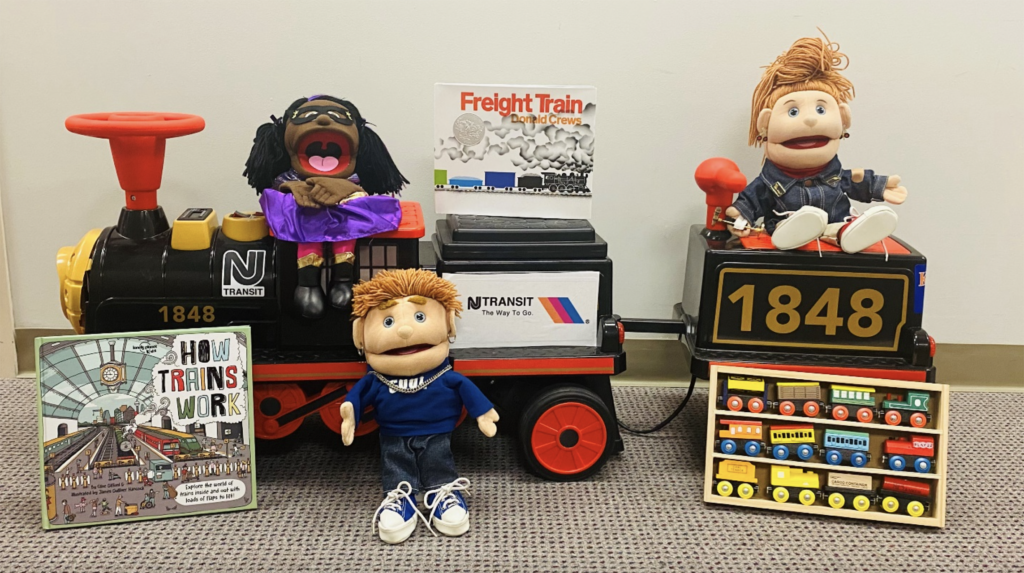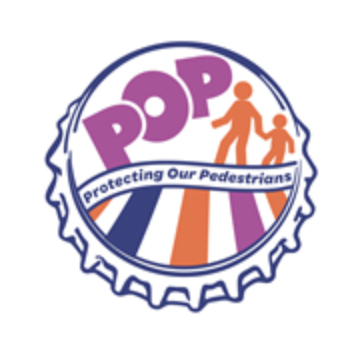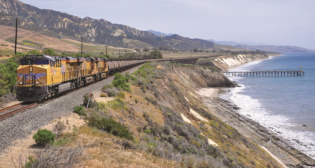
Transit Briefs: Amtrak, NJ Transit, OC Transpo, TransLink
Written by Marybeth Luczak, Executive Editor
More than 300 people rode Amtrak’s Gulf Coast Inspection Train (pictured) from New Orleans to Jacksonville, Fla., in February 2016, as part of an ongoing effort to restore passenger rail service along the Gulf Coast, which was disrupted by Hurricane Katrina in 2005 and never resumed. (Marc Glucksman, Amtrak)
Amtrak and Southern Rail Commission (SRC) officials share updates on three passenger rail projects spanning Alabama, Louisiana and Mississippi. Also, New Jersey Transit (NJ Transit) continues its school safety education programs; Ottawa’s OC Transpo launches a credit card fare payment system for all buses and O-Train Line 1 stations; and metro Vancouver’s TransLink is conducting a survey to measure regional travel patterns.
Amtrak
Amtrak and SRC on Sept. 8 provided an update on three intercity passenger rail projects along the Gulf Coast and within the I-20 Corridor. According to the organizations, Amtrak is currently running “familiarization trips” for the New Orleans-to-Mobile service that will run over host freight railroads CSX and Norfolk Southern. The construction of a train stop, and a track leading to it in downtown Mobile, is the final infrastructure issue that needs to be addressed before Amtrak can restart service. Mobile last had a train station in 2005 before it was destroyed by Hurricane Katrina.
Service plans “involve partnership agreements, whether it is with Federal Railroad Administration for grants we and others have applied to receive; state departments of transportation for matching support and guidance; with our statehouses for legislation; the city of Mobile for the terminal location; with host railroads, CSX and NS; and of course, with Amtrak,” SRC Chairman Knox Ross said. “All of these plans and partnerships are moving forward and must be in place for us to start service next year between Mobile and New Orleans. When all the elements have been finalized between the parties, the schedules, fares, and even the start date and official name of the train service will come via a joint formal announcement from Amtrak and the SRC. Until then, we have work to do.”
Additionally, Louisiana Gov. John Bel Edwards recently announced that his office will allocate $20.5 million in funds for the New Orleans-to-Baton Rouge project, according to Amtrak and SRC. The funding became available after a settlement with the U.S. Department of Housing and Urban Development for repayment of “Road Home” program funds toward the local match requirement for federal grants that the state is pursuing to fix the Bonnet Carre spillway bridge and implement the new passenger rail service.
Lastly, Amtrak, in partnership with SRC, has applied for a Federal-State Partnership program grant to study passenger rail service routes connecting New York City, Atlanta and Dallas/Fort Worth. The proposed service would extend the Amtrak Crescent from Meridian, Miss., with stops across Mississippi, Louisiana and Texas.
Further Reading:
- Agreement Reached in Amtrak Gulf Coast Dispute
- DOT to STB: ‘Set a Precedent’ in Amtrak Gulf Coast Case
- STB Will Consider Amtrak Gulf Coast Case
- Amtrak Gulf Coast Service: Analyzing the Blame Game
- Amtrak Posts Gulf Coast Grant Application for Public Viewing
- Amtrak’s Gulf Coast Service Will Impose Sizable Costs on Freight Railroads
- Gulf Coast: Class I’s, Port Seek Mediation. Amtrak Says ‘No’
- Gulf Coast Battle: CSX Seeks Shipper Support; Amtrak Advocates Respond
- STB Sets Gulf Coast Hearing, But Amtrak Loses Pre-Hearing Round
- Amtrak Seeks Expedited STB Treatment for Gulf Coast
- Amtrak Playing Hardball With CSX, NS on Gulf Coast Service
NJ Transit

NJ Transit is kicking off the school year with three safety education initiatives: Special SEAT (Safety Education Awareness Training), which addresses the importance of rail safety for students with special needs; Protecting our Pedestrians (POP), which is designed to encourage pedestrian safety for students in kindergarten through 12th grade; and Safety Rules!, which promotes general safety around the transit system.
“The continuing success of the Special SEAT and POP programs underscores NJ Transit’s unwavering commitment to safety education for students of all ages in New Jersey,” NJ Transit President and CEO Kevin S. Corbett said. “Our goal is to foster a culture of safety and vigilance for our customers and employees, as well as those living in the communities we serve.”
Special SEAT is said to deliver 40-minute training sessions over several weeks to students with special needs. It implements a modified version of Applied Behavior Analysis (ABA) to master awareness of transportation safety, with a focus on staying alert and being aware of rail and track surroundings. According to NJ Transit, the program provides an engaging and interactive presentation with puppets, arts and crafts, and natural environment training (NET) play; age-appropriate materials and videos; and safety tips and procedures. It is said to meet the IDEA and Core standards. Among the rules Special SEAT students learn are: no trespassing; stay alert; obey signs and signals; cross at designated areas only; and stand behind the safety line on station platforms.

POP is an interactive 45-minute presentation that addresses crossing streets and intersections safely, traffic hazards and signals, parking lot safety, and more, according to NJ Transit. The presentation also includes a discussion on the dangers of railroad tracks; age-appropriate films, including NJ Transit’s “Sly Fox and Birdie” video, which was created by Operation Lifesaver; and a question-and-answer session.
Both Special SEAT and POP are free of charge to teachers, para-professionals, guidance counselors and school administrators.
According to NJ Transit, public, non-profit and charter schools are encouraged to request the free, 45-minute Safety Rules! presentation to educate students on the need for safe behavior and caution around trains, buses and light rail vehicles. It includes a discussion on the dangers of railroad tracks; age-appropriate films, including NJ Transit’s “Sly Fox and Birdie” video; and a question-and-answer session. The program is also available for free to community groups.
OC Transpo
OC Transpo has officially introduced O-Payment. Riders can now pay Adult fares with Visa, Mastercard, Apple Pay or Google Pay at all Line 1 stations and bus fare readers. According to the transit agency, riders can use the same credit card to transfer between trips and won’t be charged again within the regular transfer window. Also, with daily and monthly fare-capping, riders will never be charged more than the price of a DayPass or Adult monthly pass. They can also check their trip history and get a receipt at www.o-payment.octranspo.com. OC Transpo noted that if riders are eligible for a discounted fare, use a monthly pass, or transfer regularly to STO, Presto is still their best option. Interac Debit is expected in 2024.
TransLink
TransLink has opened its “Trip Diary” survey for submissions from the public. Conducted twice every ten years, Trip Diary is “crucial in helping determine how people travel throughout metro Vancouver and the Fraser Valley,” according to the transit agency. Approximately one-third of households in those regions will be receiving letters asking them to participate. Each participating household will receive a C$20 gift card and an additional C$10 gift card for every household member who responds via the free smartphone app. These households will also be automatically entered into a drawing to win cash prizes up to C$2,000.
“Travel patterns have changed significantly over the past few years, and this data will help TransLink, political leaders and stakeholders better understand those new patterns when making transportation plans for the region,” TransLink reported Sept. 8. The last Trip Diary survey was conducted in 2017. According to the transit agency, Trip Diary data has supported such plans as:
- TransLink’s Transport 2050: 10-Year Priorities
- City of Vancouver’s Transport 2040
- Clean BC’s Roadmap to 2030
- City of Coquitlam’s Strategic Transportation Plan
Trip Diary data is collected by TransLink and shared with the government of British Columbia, regional municipalities and other stakeholders. All socio-demographic information of participants is kept confidential, according to TransLink.



